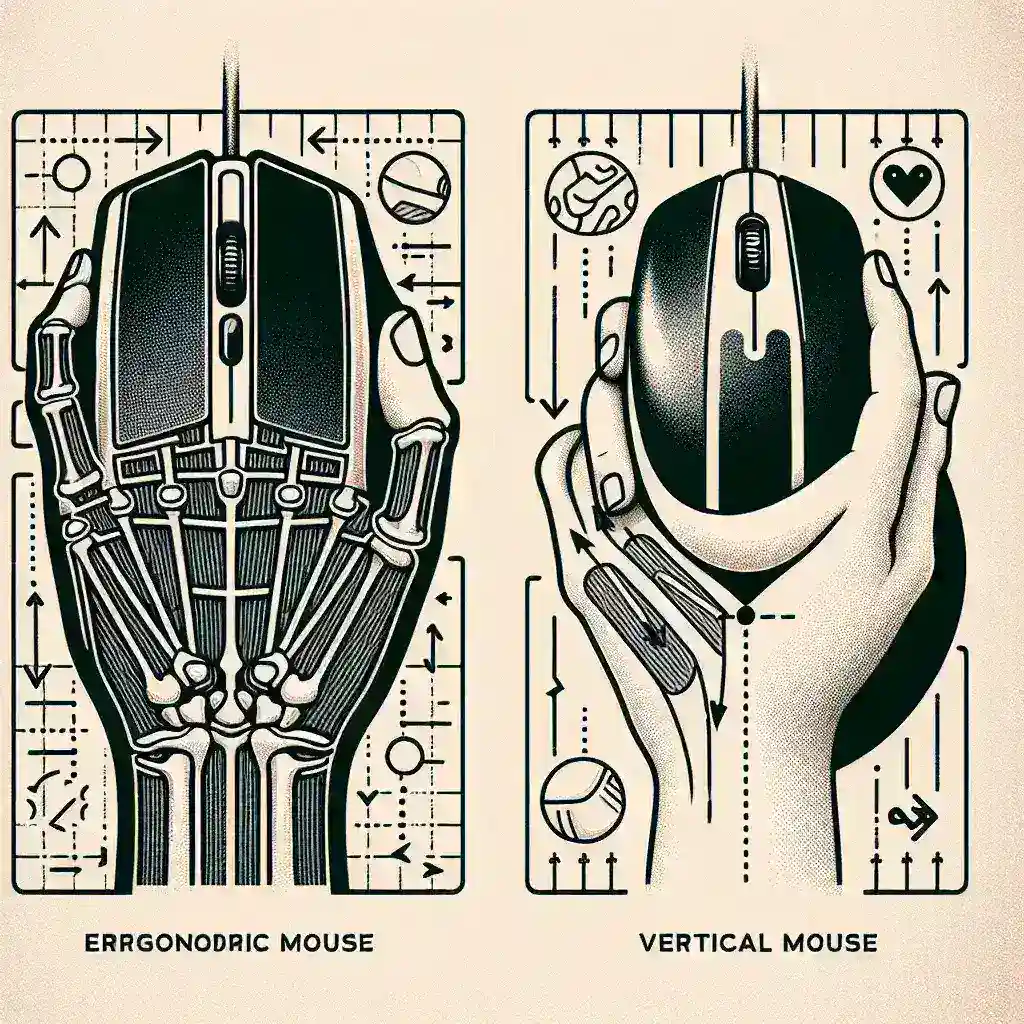As modern workplaces become increasingly digitalized, more people are spending extended hours at their computers. While the convenience of technology brings numerous benefits, it also introduces new challenges, such as wrist strain and repetitive stress injuries (RSI) tied to prolonged use of traditional computer mice. In this context, ergonomic vertical mice have emerged as a revolutionary solution designed to mitigate these issues. But how exactly do these devices help reduce wrist strain compared to traditional mice? Let’s dive in to explore the science and benefits behind ergonomic vertical mice.
The Basics: Traditional Mice vs. Ergonomic Vertical Mice
Let’s start by understanding the fundamental differences between traditional mice and ergonomic vertical mice. Here’s a comparative overview:
| Feature | Traditional Mouse | Ergonomic Vertical Mouse |
|---|---|---|
| Design | Flat and horizontal | Vertical and handshake position |
| Hand Position | Pronation | Neutral |
| Muscle Use | Forearm muscles | Shoulder and upper arm muscles |
| Wrist Angle | Angled | Neutral |
The Perils of Pronation
The design of traditional mice requires users to pronate their hands—that is, to turn the palms facing down. This pronation leads to a contraction of the forearm muscles and tendons, increasing wrist tension and strain. Using a traditional mouse over long periods can contribute to conditions such as carpal tunnel syndrome and tendonitis.
Key Issues With Traditional Mice
- Increased Muscle Activity: Using a traditional mouse involves continuous engagement of the forearm muscles, leading to fatigue and strain.
- Excessive Wrist Movements: The flat design necessitates a constant back-and-forth wrist movement, which can cause repetitive stress injuries.
- Unnatural Hand Posture: The pronated position is not the hand’s natural resting posture, thereby increasing the risk of discomfort and injury over time.
Benefits of Ergonomic Vertical Mice
Ergonomic vertical mice counter these issues by promoting a more natural, handshake-like posture. Here’s how they contribute to reduced wrist strain:
Natural Hand Position
Ergonomic vertical mice allow users to keep their hands in a more neutral or ‘handshake’ position. This natural posture reduces muscle tension in the forearm and wrist.
Muscle Engagement
Instead of straining the forearm muscles, vertical mice engage larger muscle groups like those in the shoulder and upper arm. Engaging larger muscle groups can distribute workload more evenly, reducing localized fatigue and strain.
Reduced Wrist Movement
The design of ergonomic vertical mice minimizes the need for extensive wrist movements. By moving the cursor with more of the arm than the wrist, users can significantly cut down on repetitive stress.
Lower Risk of Injury
By promoting a neutral wrist position, ergonomic vertical mice can reduce the risk of developing carpal tunnel syndrome and other repetitive stress injuries.
Scientific Backing
Numerous studies back the efficacy of ergonomic vertical mice. For instance, a study conducted by Vrije Universiteit Amsterdam found that vertical mice reduce forearm muscle activity compared to traditional mice. Another study by the Harvard School of Public Health corroborated these findings, indicating reduced risk of musculoskeletal disorders for those who used ergonomic vertical mice.
Choosing the Right Ergonomic Vertical Mouse
If you’re considering switching to an ergonomic vertical mouse, here are some features to look for:
Comfort
Ensure the mouse fits well in your hand. It should feel natural and not too bulky or small.
Adjustability
Look for models that allow adjustments in sensitivity (DPI settings) and customizable buttons for improved user experience.
Quality
Choose reputable brands known for quality and durability to ensure you get the best ergonomic benefits and product longevity.
Conclusion
In a world where digital interactions are ever-increasing, mitigating the risks associated with prolonged computer use is crucial. Ergonomic vertical mice offer a practical, scientifically-backed solution for reducing wrist strain and improving overall comfort. By understanding the differences between traditional and vertical mice, users can make informed decisions to enhance their workplace ergonomics and long-term health.

